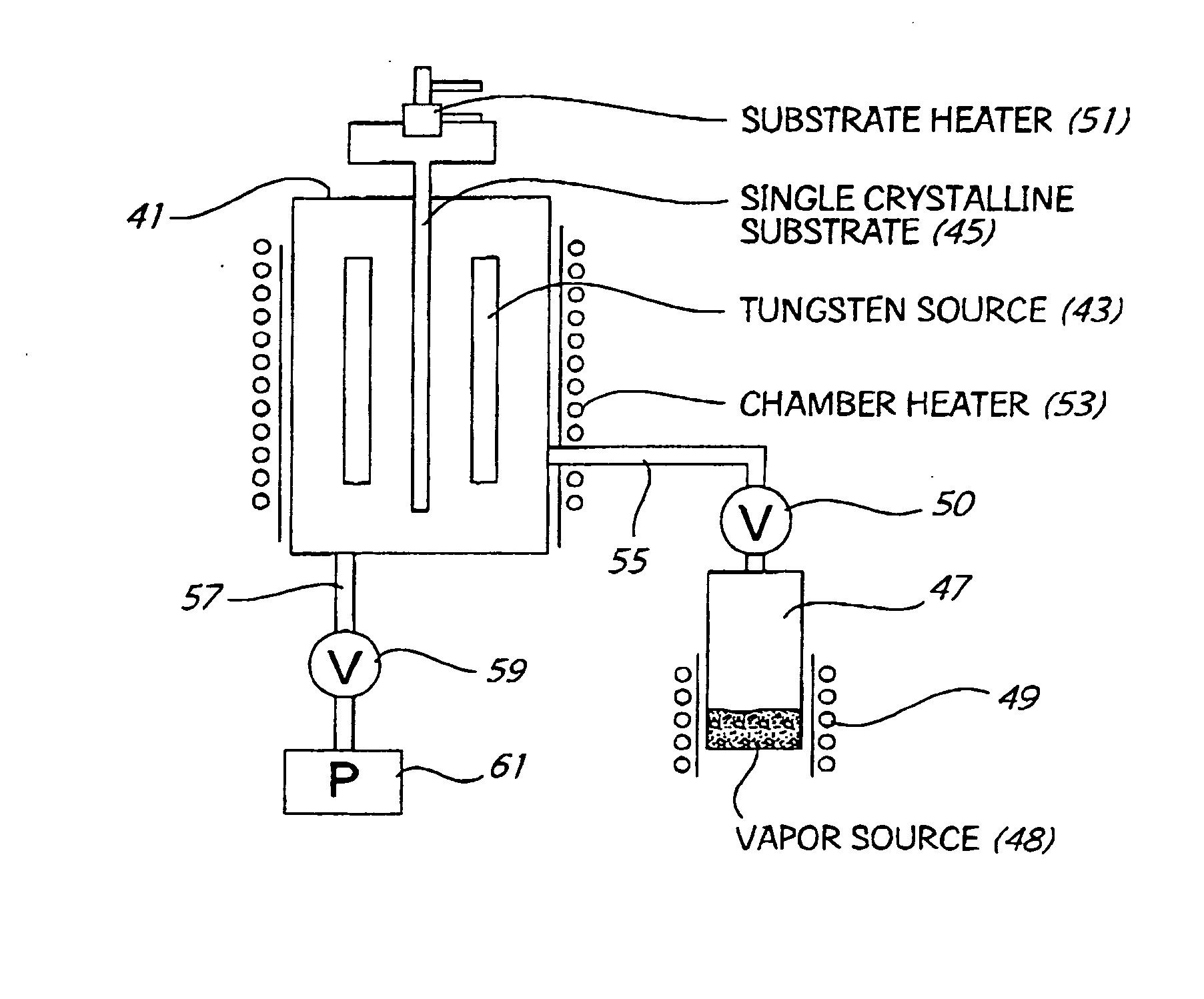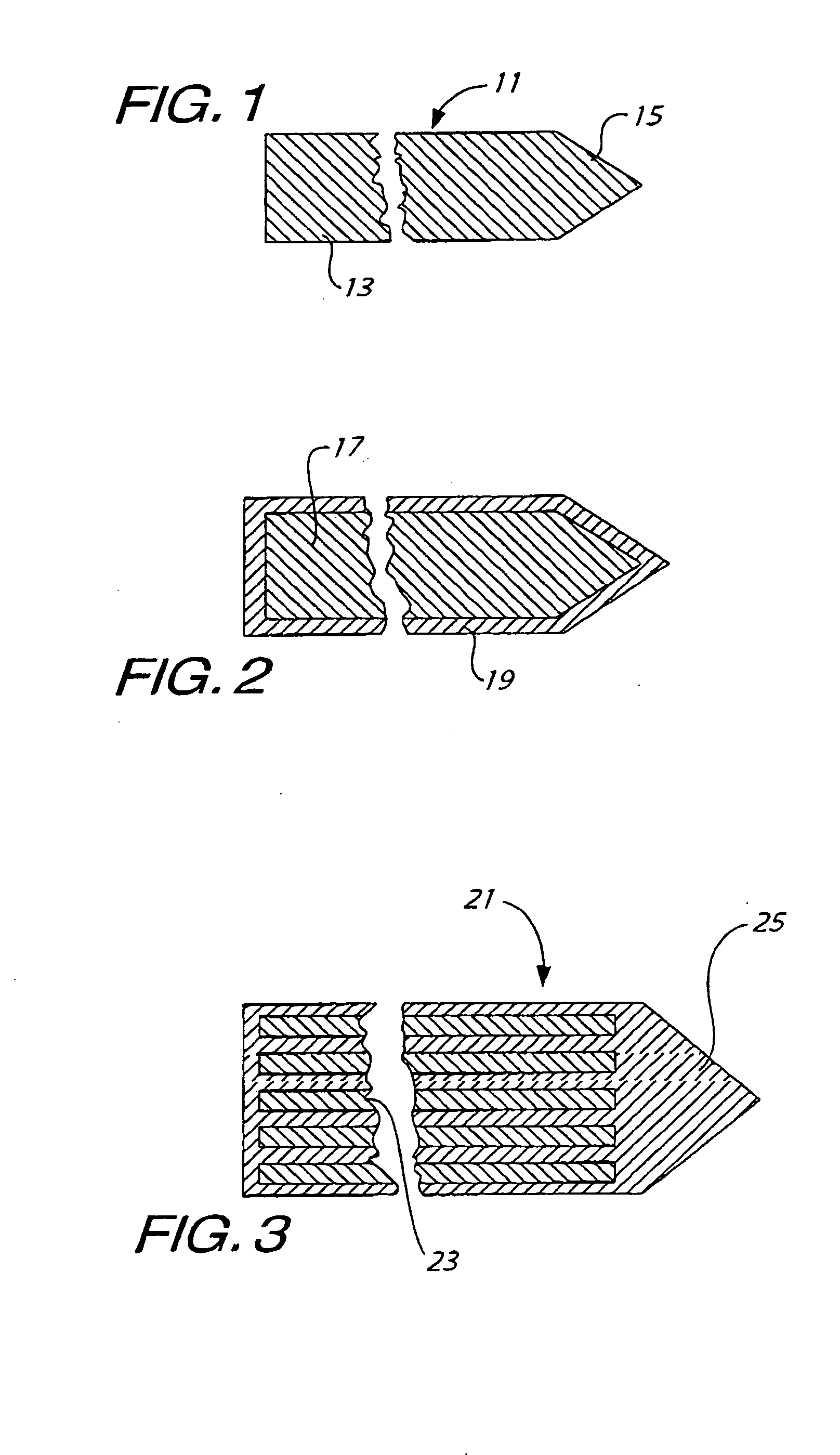Single crystal tungsten penetrator and method of making
a single crystal tungsten and penetrator technology, applied in the direction of chemically reactive gases, crystal growth process, chemical vapor deposition coating, etc., can solve the problems of toxic to the kidney, theoretically carcinogenic, environmental and occupational hazards, etc., to minimize the creation of reaction by-products and efficient use of raw materials
- Summary
- Abstract
- Description
- Claims
- Application Information
AI Technical Summary
Benefits of technology
Problems solved by technology
Method used
Image
Examples
Embodiment Construction
[0025] Bodies of single crystal material can be formed from tungsten which will have characteristics that will meet desired criteria set down by the United States Army for high density penetrators that will survive muzzle launch from a weapon. These single crystal materials should contain at least about 90% tungsten, e.g. about 90 to about 100%, preferably contain between about 91% and about 95% tungsten and more preferably contain between about 92% and about 94% tungsten, with one preferred alloy containing about 93% tungsten. Tungsten has a body-centered cubic crystalline structure, and alloying elements, when included, should either have a body-centered cubic crystal structure or a hexagonal close-packed crystal structure. The remainder of the alloy preferably contains tantalum, rhenium, niobium, molybdenum or a mixture of two or more of such metals. Although minor amounts of other elements having such a crystal structure can be tolerated, such presence should be minimized so as ...
PUM
| Property | Measurement | Unit |
|---|---|---|
| Temperature | aaaaa | aaaaa |
| Temperature | aaaaa | aaaaa |
| Temperature | aaaaa | aaaaa |
Abstract
Description
Claims
Application Information
 Login to View More
Login to View More - R&D
- Intellectual Property
- Life Sciences
- Materials
- Tech Scout
- Unparalleled Data Quality
- Higher Quality Content
- 60% Fewer Hallucinations
Browse by: Latest US Patents, China's latest patents, Technical Efficacy Thesaurus, Application Domain, Technology Topic, Popular Technical Reports.
© 2025 PatSnap. All rights reserved.Legal|Privacy policy|Modern Slavery Act Transparency Statement|Sitemap|About US| Contact US: help@patsnap.com



